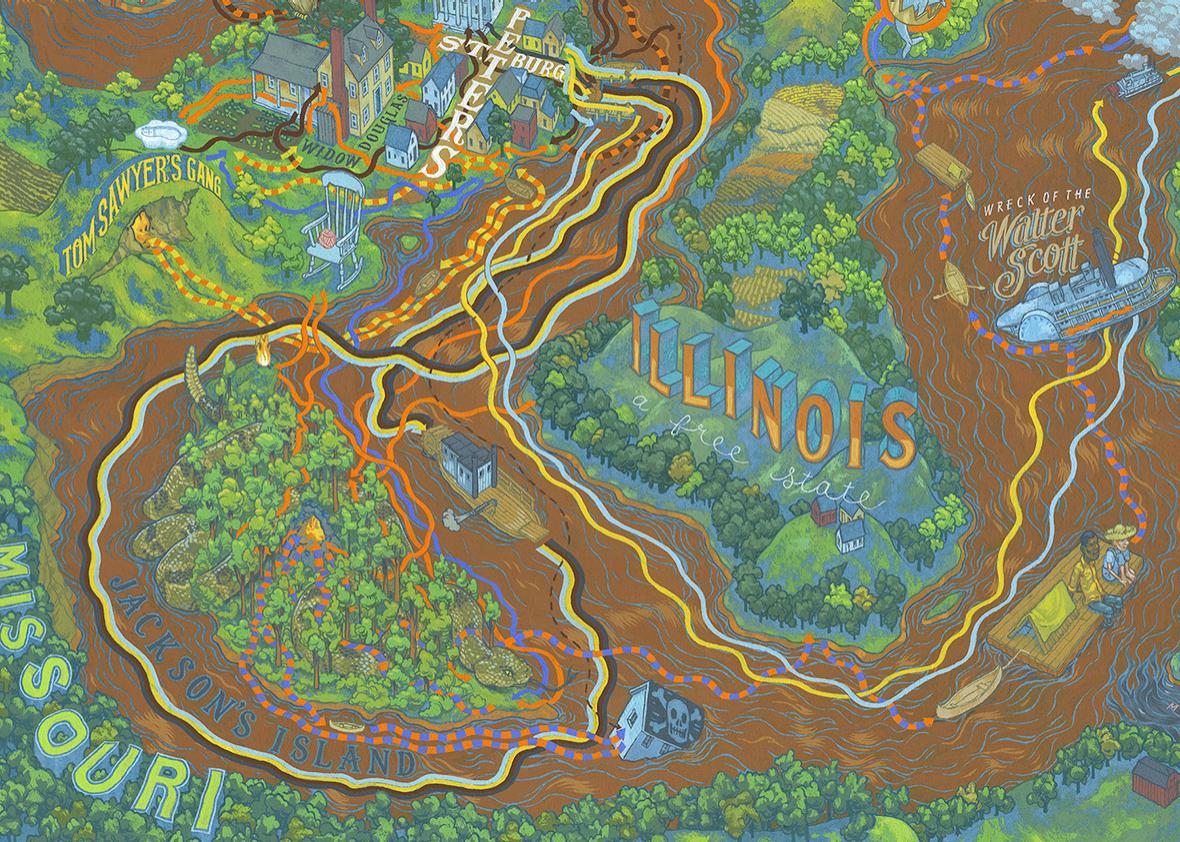What does the town in Shirley Jackson’s “The Lottery” look like? What about the Castle Elsinore in Hamlet? Or Odysseus’ path in The Odyssey? Or the New York of Invisible Man? If you think about those books and stories, you can probably imagine some version of what a map of those settings might look like.
But what about some more complex literary habitats? How would you draw a map of the place where Vladimir and Estragon wait for Godot? Or the planets of A Wrinkle in Time? Or the course of true love in Pride and Prejudice?
And how might a map of Moby-Dick look? Would it follow the Pequod around the North Atlantic? In Andrew DeGraff’s remarkable “literary atlas” Plotted, the map of Moby-Dick is a cross-section of the Pequod itself—and then a remarkably similar cross-section of a whale, its ribs and holds and rudders laid bare for the reader to investigate.
Plotted, at first glance, is merely beautiful—gorgeous multipage maps, drawn by DeGraff, of Frederick Douglass’ Eastern Shore and the rabbits’ warrens of Watership Down. But as you read DeGraff’s clever accompanying essays, you realize that what you’re holding is actually quite an innovative work of literary criticism, offering new ways of looking at books and stories that seemed entirely familiar. From the flat Earth of Around the World in Eighty Days to the many Londons of A Christmas Carol, DeGraff brings these works to life in fascinating and surprising ways. Just look at this detail from DeGraff’s intricate, six-page map of Huckleberry Finn, which illustrates in eye-opening fashion DeGraff’s assertion that Huck, surrounded on all sides by “hucksters, racists, zealots, bloody-minded aristocrats, and simple-minded fools,” illuminates the book in his role as skeptic and arbitrator: “Always being grappled with by people on both sides, he stays in the middle. He defines his own morality, makes his own course, and continues on.” We’re very proud to have the remarkable writer and artist Andrew DeGraff illustrating this month’s issue of the Slate Book Review.
—
Plotted: A Literary Atlas by Andrew DeGraff. Pulp.
See all the pieces in the Slate Book Review.
Sign up for the Slate Book Review monthly newsletter.
